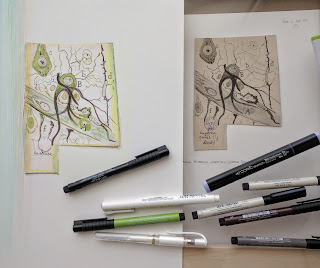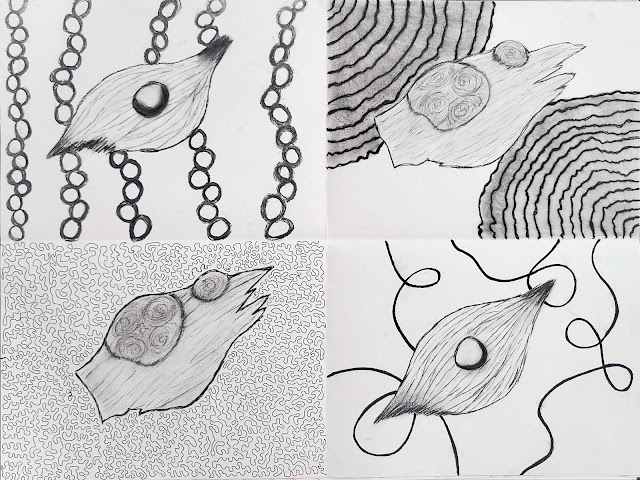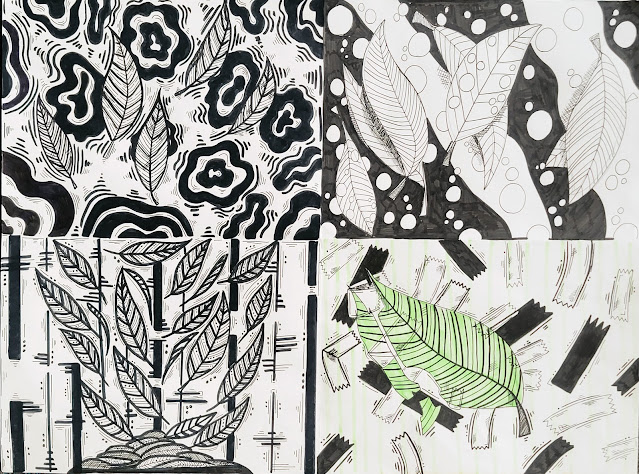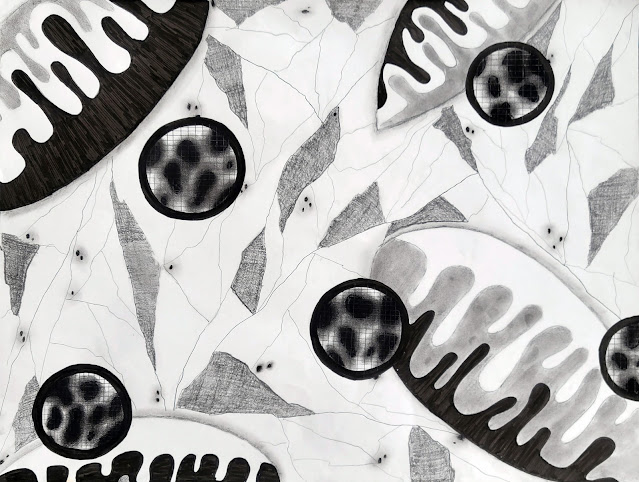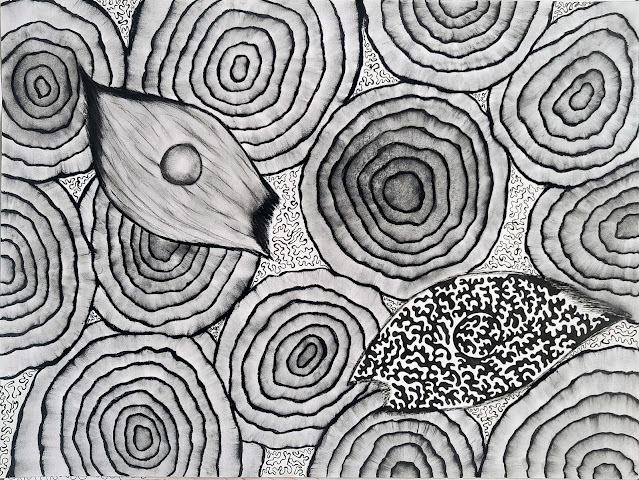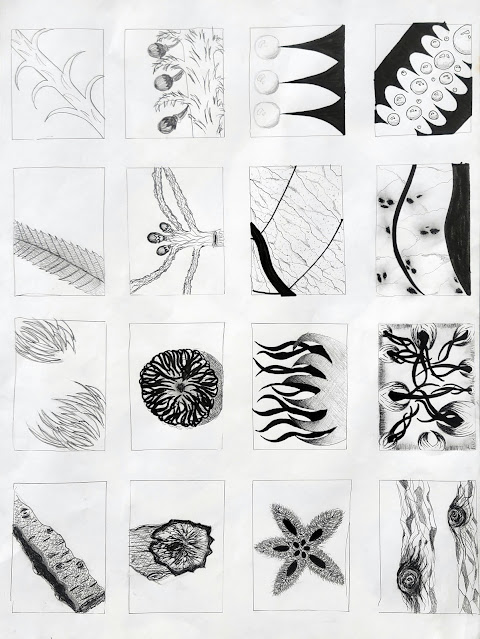Santiago Ramón y Cajal, the renowned Spanish neuroscientist, created an extraordinary body of work that showcased his unique ability to observe and record the intricate details of nature through drawing. Instead of approaching his drawings from a designer's perspective, Cajal relied on perceptual observation to uncover the inherent design of nature. His drawings served as a tool to observe, discern, and recount microanatomy structure, capturing the essence of nature's complexities with actual lines and implied space. Cajal's artistic philosophy centered around the belief that he was at the service of nature – recording and reporting the truthfulness of sight's journey.
Inspired by Cajal's attention to detail and descriptive lines, this blog post will explore an exciting mixed-media drawing assignment that encourages artists to closely observe and capture nature's beauty through line, shape, and texture. We'll explore the role of line variation and texture in adding visual dynamism and the importance of capturing the inherent "movement" or "gesture" of your chosen object. So, let's embark on this artistic journey together and uncover the truthfulness of sight's journey, just as Cajal did.
Introduction
Nature has always been a source of inspiration for artists. In this blog post, we will explore an exciting mixed-media drawing assignment that brings together found objects from nature and your creative inventiveness. This project will utilize line, shape, and texture to create a captivating and descriptive piece. We'll also study the role of line variation and consistency in adding visual dynamism and the importance of capturing the inherent "movement" or "gesture" of your chosen object. So, let's dive into the details and embark on this artistic journey together!
Above, Dawn Hunter's study of an original scientific drawing of Cajal's housed at the Instituto Cajal. Photo © by Dawn Hunter.
The Assignment
Our goal is to create a mixed-media drawing that incorporates a found object from nature, juxtaposed and overlapped with imagery from one of your shape and texture inventories. The final piece should demonstrate your ability to engage the edges of the composition fully, create a descriptive drawing with overlapping images and lines, experiment with the juxtaposition of shape and texture, and participate in a visual critique process.
Materials You'll Need:
- Found object from nature
- Charcoal
- Pencils
- Ink
- Two sheets of 18" x 24" drawing paper
The Process: Begin by developing four thumbnail sketches on a quartered sheet of paper. These sketches will serve as the foundation for your final piece, so be sure to measure and divide the paper evenly using a ruler or by neatly folding it.
Once your sketches are complete, select one to develop into your final drawing. As you work on the piece, consider the following strategies and questions:
- Composition and Format: Pay close attention to the edges of the composition and the placement of your found object. Consider whether a vertical or horizontal format would be more visually pleasing.
- Line Variation and Texture: Experiment with overlapping lines, varying their size, direction, speed, and degree of value. This technique will enhance the illusion of texture, adding depth and descriptiveness to your composition. Reflect on how line variation and texture contribute to visual dynamism in your artwork.
- Capturing Gesture and Movement: Think about the dominant "gesture" or "movement" inherent in your found object – if it were moving with velocity in a particular direction, which way would that be? Consider the factors that created this movement, such as the growth of a branch or the impact of wind. Contemplate the effects of enhancing this movement with texture and line direction to create a more engaging and visually striking piece.
Conclusion
This mixed media drawing assignment is an excellent opportunity to explore the natural world and develop your artistic skills. By focusing on line, shape, and texture, as well as considering visual dynamism and the inherent movement of your chosen object, you'll create a unique and descriptive piece that showcases your creativity and highlights the beauty of nature. So, gather your materials, venture outdoors to find your inspiration, and start sketching your way to an unforgettable artistic experience!
To view more examples of this project, visit my teaching portfolio website, here.
Above, Renee Kinney's Texture Inventory drawings, India ink, graphite, and charcoal on paper, 18" x 24." project based on Mary's Stewarts Texture Inventory exercise.
Dawn Hunter is a visual artist and Associate Professor at the University of South Carolina. She is the creator of the Cajal Portfolio project and author of all content on this blog, which explores intersections between art, science, and perception. Learn more about her work at www.dawnhunterart.com, her Google Scholar, or her ORCID iD.

